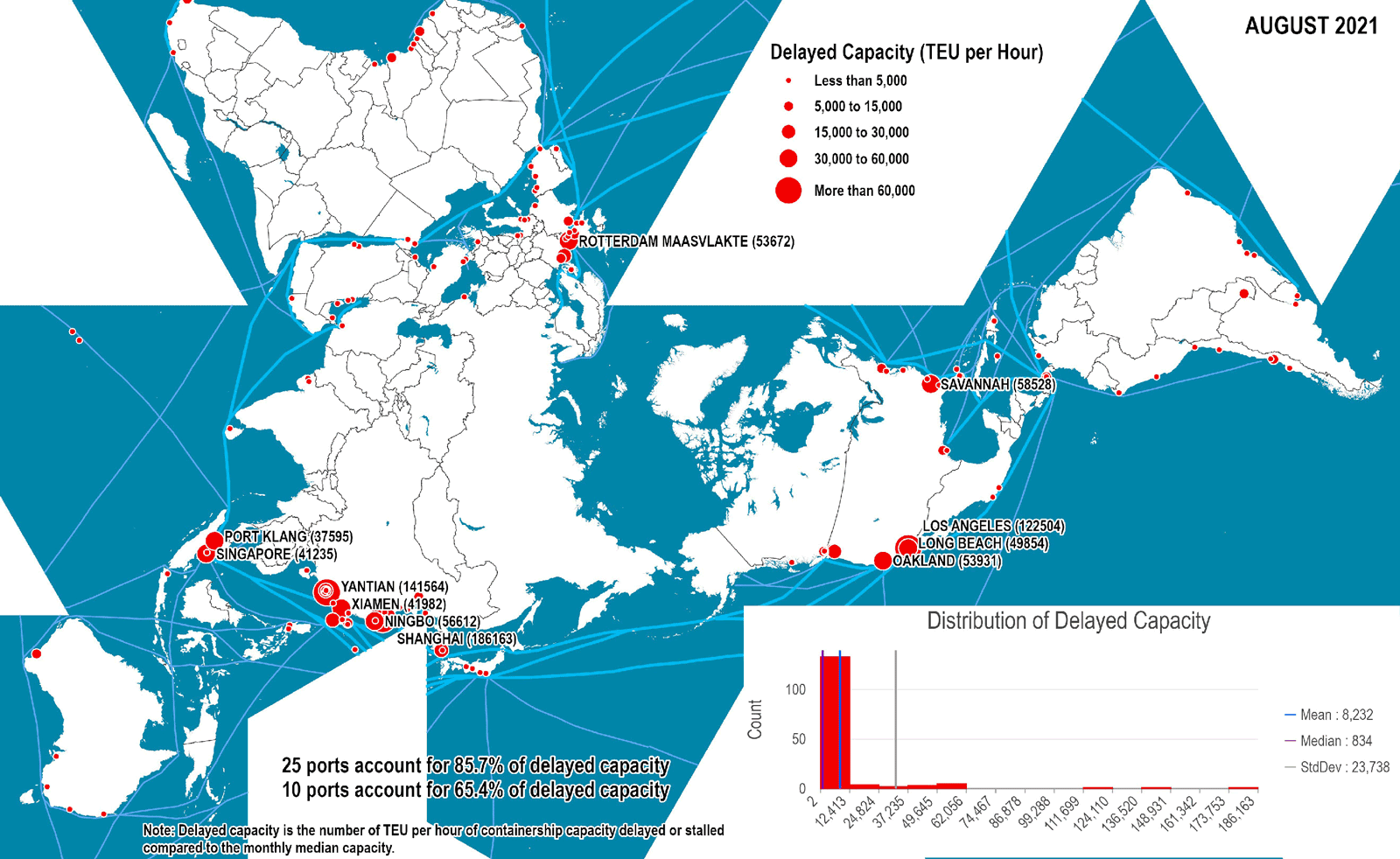The World Bank is developing a more focused port-centric stress index, which considers stalled shipping capacity, and measures the total number of TEU of shipping capacity delayed at ports, resulting from containerships of Panamax size and above operating on main deep-sea services. Under normal circumstances, shipping services have consistent lead times between port calls and turnaround times at port. Notable deviations, resulting in stalled capacity at ports, can then be established through periodic observations of the benchmark of normal performance (figure 39).
Figure 39: Containership delayed capacity in TEU, per hour at port, August 2021

Source: World Bank “Container Port Stress Index” (unpublished).
Schedule integrity and reliability were substantially impacted by a surge in port delays. COVID-19 lockdowns in a manufacturing area near a port can create substantial disruptions as cargo gets backed up, leading to a destabilizing surge when the lockdown is lifted. By late 2020, pier and yard congestion became more prevalent along the world's main gateway, further reducing the numbers of available containers and the capacity of shipping lines to move containerized cargo. This congestion resulted from a concentration of delays in a limited number of ports.
As of August 2021, 25 ports, mainly located in China and on the West Coast of the United States, accounted for 85.7 per cent of delayed container capacity. Ten ports, including Los Angeles/Long Beach, Ningbo, Savannah, Shanghai and Yantian, and accounted for 65.4 per cent of the delayed capacity, underlining their excessive concentration. Several container yards were filled at capacity, slowing the processing of ships that could not be unloaded until yard storage space became available. These delays have a strong backpropagation impact on shipping networks as vessels waiting at anchor have cascading effects by removing their capacity while waiting, resulting in additional container shortages and shipping rate surges. This had a bullwhip effect on supply chains. Because of the growing unpredictability of delivery times, elements of the supply chain attempted to increase supplies and the buffer (safety) inventories, which contributed to a demand surge.
